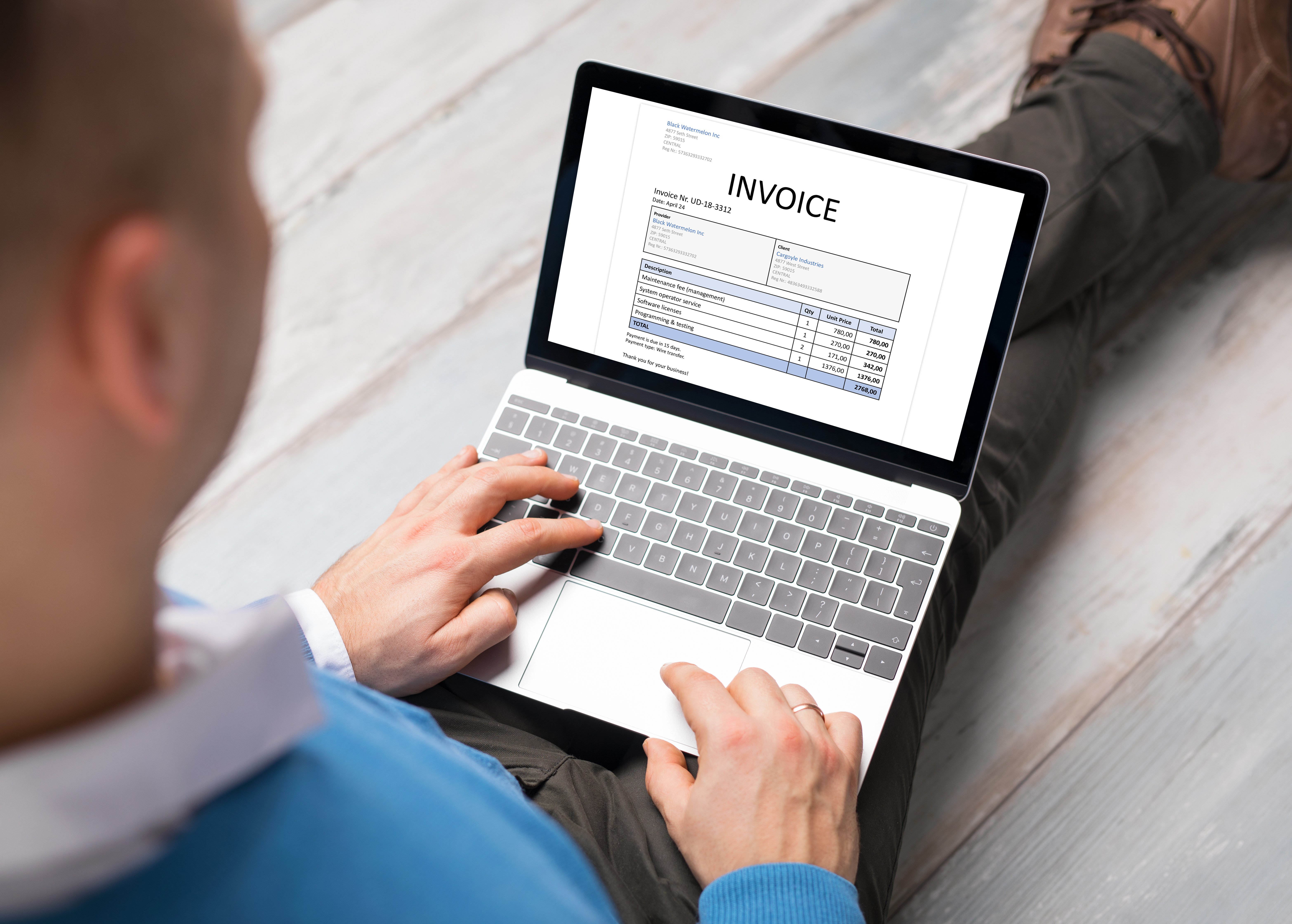As a business owner, whether you manage a large company or a small enterprise, understanding how to create invoices and collect payments efficiently is key to maintaining smooth operations. Prompt payments help sustain steady cash flow, allowing you to handle expenses, invest in growth, and keep your business functioning without disruption.
Late or missed payments, on the other hand, can seriously damage your business. Studies show that 25% of small businesses experience payment delays of up to 30 days beyond the agreed terms. These overdue payments disrupt cash flow, reduce revenue, and often force you to adjust your business strategy to make up for financial shortfalls.
Beyond financial setbacks, delayed payments can strain client and supplier relationships, leading to unnecessary tension. Persistent late payments may also indicate deeper issues within your client base, suggesting the need to reassess credit policies or tighten payment terms. Adopting strong invoicing systems and a structured follow-up process can help reduce these risks and strengthen your cash flow management.
What are invoice payment terms?
Payment terms refer to agreements that set payment options and expectations for payments. To ensure that they receive prompt payments, business owners set payment terms. The more common payment terms are net 30 and net 60.
Net 30 means that the business owner expects payment within 30 days from the invoice date. Net (number of days) is a credit term that means a business delivered a product or service first in expectation of receiving compensation at the stated date.

Example of how payment terms work
Imagine you’re about to open a storefront and purchase equipment worth $4,000 on credit. You recently delivered goods worth $6,000 to a customer and submitted an invoice.
You hope that the client will make the payment by the end of the month. The payment due date arrives and elapses, but still no payment. Attempts at follow-up with the client remain futile. As a result of the unpaid invoices, you’re paying utility bills and wages for a store that isn’t generating enough money, and you have to clear the accounts payable. Instead of making money, you wind up losing it.
This shows the importance of payment terms. Since not every customer can make an immediate payment, create a professional invoice highlighting the payment terms of the sale.
Make a concise and easy-to-understand invoice with stage payments options and discounts to incentivize early payments. Also, include late payment penalties to discourage overdue payments. That will increase your chances of receiving payments on the invoice due date and reduce the amount of accounts receivable.
The 12 most common invoice payment terms
- Cash account – this term refers to invoices that clients must pay in cash. In this case, credit is not applicable.
- Cash before shipment (CBS) – this term is common among businesses that make custom work for clients, such as designers, artists, and furniture makers. They typically require a down payment before shipping the goods to protect them from loss should the client fail to clear the rest of the invoice.
- Cash in advance (CIA) – this term is similar to CBS. However, this one indicates a requirement for full payment before work begins. Also known as Payment in Advance (PIA).
- Cash next delivery (CND) – this term is for businesses with repeat clients. This means that you must pay an order in full before the next scheduled delivery. Other invoice terms that mean the same are recurring invoicing or recurring invoices.
- Cash on delivery (COD) – indicates that cash, or an equivalent, is due when the client receives the invoice.
- Cash with order (CWO) – this is similar to CBS. However, this requires upfront payment before order fulfillment and goods creation.
- Contra payment – happens when a business issuing an invoice also owes money to the company receiving the invoice. There is an allowance for payments in services or products instead of cash.
- End of month (EOM) – indicates that payment is due on the last day of the month of the invoice date.
- Interest invoice – is a special invoice issued for late fees and interests accrued on previous unpaid invoices.
- Terms of sale – the details of the order invoice. These can include a due date, total amount of the order, quantity and quality of goods, invoice number, delivery date, and acceptable payment methods.
- Net 7/10/30/60/90 – implies that a payment is due in 7, 10, 30, 60, or 90 days past the invoice date. To ensure you always have sufficient cash flow, keep the number of days for credit payments short, preferably net 7, 10, or 30.
- 2/10 net 30 – this means that a client needs to pay 30 days after the invoice date. However, if they manage to pay within 10 days, then get a 2% discount on the invoice. These early payment discounts work as incentives to encourage clients to pay invoiced amounts early.
Control payment methods with payment terms
In addition to determining when clients pay, you also have to control how they pay. Always include your preferred payment methods in the invoice terms. Selecting how you want to get paid ensures clients process payments quickly and helps avoid confusion and payment delays.
The best way to ensure prompt payments is to make the process as seamless and convenient as possible for clients. If you are used to receiving checks or cash payments, consider adding different payment methods that clients frequently use. The best two payment methods are:
a) Smart invoices
Invoicing software makes it convenient for clients to make payments using pay-enabled smart invoices. Smart invoices let customers use payment methods such as debit cards, credit cards, and automated clearing house (ACH) bank transfers.
Smart invoices also allow you to set up recurring and automatic payments, which helps reduce any guesswork associated with invoicing. If you’d rather not have recurring payments, there is still the option of sending an email invoice with the payment link.
These features come in handy for ongoing contracts, so choose an invoicing software that comes with free ACH payment features.
b) Credit card payments
Credit card payments are a popular and convenient way to make payments. Ask clients to provide you with a credit card number that you can charge. Remember that there are fees associated with using credit cards, and you will need to factor in those fees.
You can choose to pay the fees or pass on the costs to customers. If you want the clients to pay the fees, indicate this in the contract. This stops clients from feeling duped or blind-sided.
Why you need net terms management
You cannot always have control over when clients make payments. Anything can happen on their end that will disrupt your business. Use a net terms management company to prevent that.
Take Resolve, for instance–they take on the risk of late payments, enabling you to have a continuous cash flow for the business. For approved customers, Resolve lets them pay in 30, 60, or 90 days while you get paid up to 90% of the invoice face value after one day. They conduct credit checks on clients to determine who qualifies for net terms.
Suppose you don’t know how to invoice customers effectively and make payment claims. In that case, Resolve offers an accounting software solution to run payment processing for business owners who can’t run their own net terms processing teams.
With Resolve, you won’t ever have to worry about chasing after late payments. Instead, this company takes on that responsibility and collects the payments. Think of Resolve as having your own personal credit team.
Common payment terms challenges small businesses encounter
Having payment terms is critical to the success of your business. However, these are some of the challenges you may encounter along the way:
- Payment insecurity. Even though online payments are convenient for you and the client, not all payment platforms are trustworthy. You need to provide secure payment methods to protect their sensitive information.
- Managing and tracking payments and invoices. Depending on how large the business is, you may find it challenging to keep track of invoices and payments. Utilize a credit management solution company like Resolve to help with this.
- Unpaid invoices. Unfortunately, unpaid or late invoices are a common feature for small businesses. To prevent this, have detailed payment policies and effective payment methods. An invoice factoring company can take on the risk of potential non-payments while advancing you the cash instantly, even when the invoice is on a net terms basis.
Final word – why you need payment terms on invoice
Managing invoices and payments can be a headache for small business owners, often pulling them away from their core activities. To avoid this, make sure to specify clear payment terms on each invoice, like cash on delivery, cash next delivery, and net terms, so your clients know exactly when to settle.
However, some payments may still get missed. That’s where an independent firm like Resolve comes in. They’ll pay you up to 90% of the invoice’s value within a day of sending it out, offer your customers net terms of up to 90 days, and take care of the payment follow-up themselves. Request a demo to find out how they can help you.
This post is to be used for informational purposes only and does not constitute formal legal, business, or tax advice. Each person should consult his or her own attorney, business advisor, or tax advisor with respect to matters referenced in this post. Resolve assumes no liability for actions taken in reliance upon the information contained herein.







